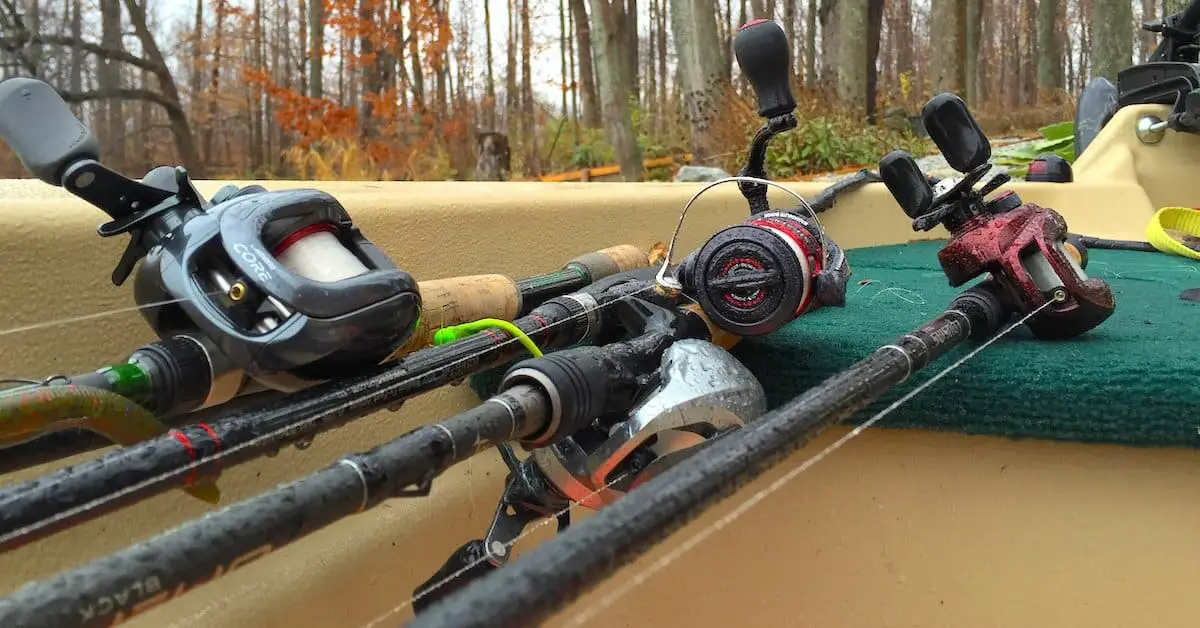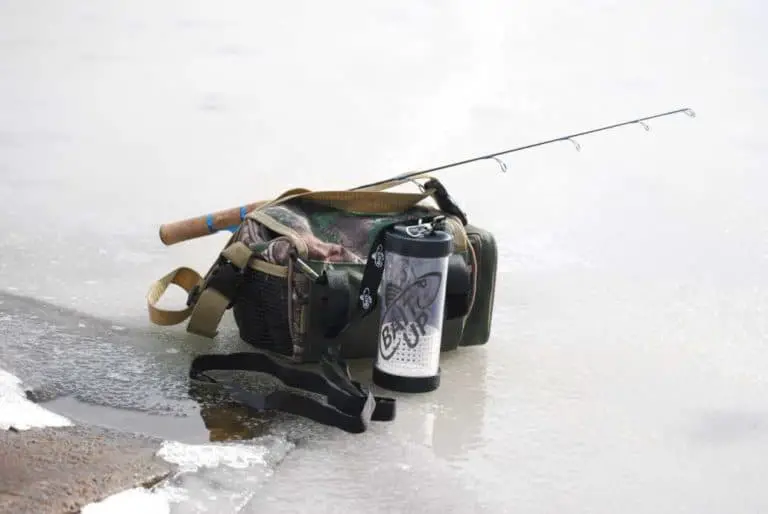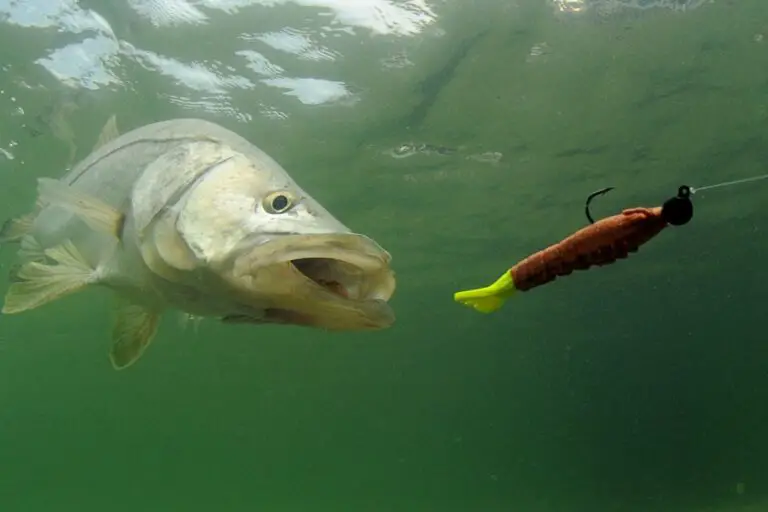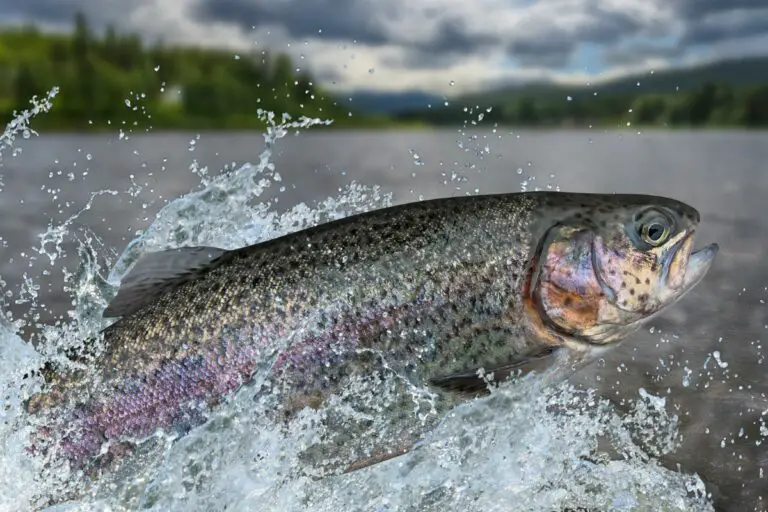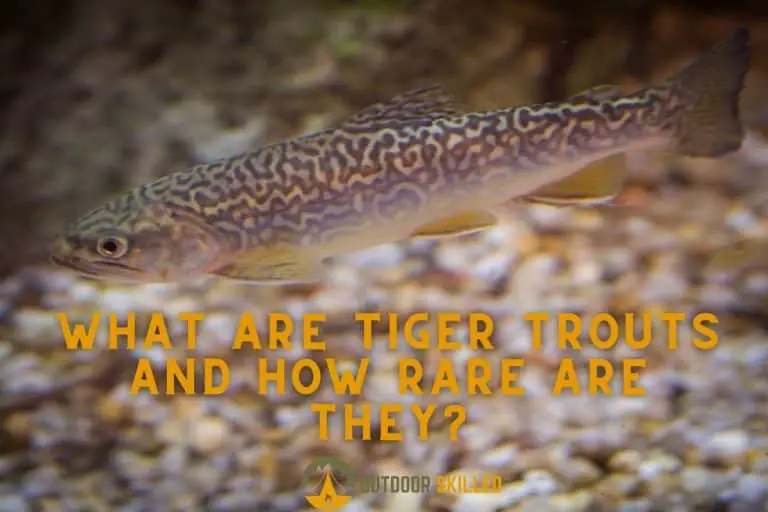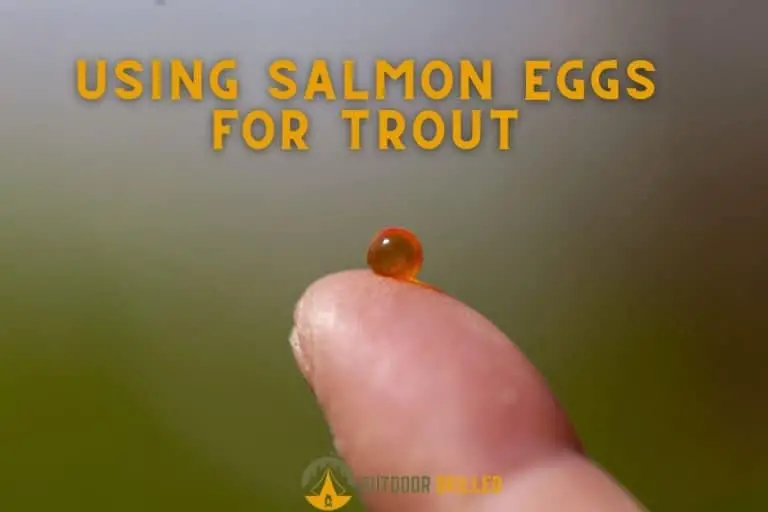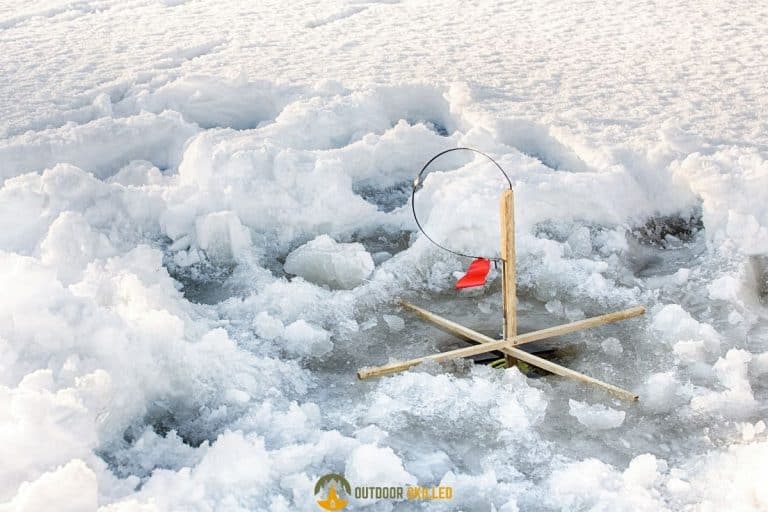How to Buy a Fishing Rod
Fishing requires a lot of patience and skill. Having the right gear for the right situation is as vital. Getting your gear ready is a long process that goes alongside how you become a more experienced fisher with time. You can build a more expansive arsenal of fishing rigs as you advance to cover your different needs and get you the most out of every fishing trip.
If you’re a beginner who’s looking for the right gear to get you started, you’re lucky because there are versatile options that can cover most of your needs as a beginner and help you learn and fine-tune your gear along the way, to build a bigger rig as you advance.
Fishing rods are, of course, one of the most prominent and crucial aspects of your fishing rig. For that reason, we’re here to help you discover what makes or breaks a fishing rod, and by the end of our deep-dive, you should be able to make an informed purchase decision and choose the right rod for you.
Best Kayak Fishing Rods in 2021 – Buyer’s Guide
Table of Contents
Quick Overview
The rod length controls how far away you can cast your bait. Generally, shorter rods give you better control, which makes them a more precise option.
The next step is to decide on the rod’s material. Graphite is light, rigid, sensitive, and can withstand a considerable amount of force. However, it is more liable to break because of its rigidity.
Fiberglass is more robust and, accordingly, doesn’t break easily, but it’s heavier. It doesn’t do an excellent job in terms of giving you sensitivity to any small ripples that form around your bait. However, it remains the preferred option among casual fishers for its durability.
What Are the Different Parts of a Fishing Rod
Before you get overwhelmed with all the technicalities upon which you should base your fishing rod choice, just relax and come to know the different parts of a fishing rod first.
1. Blanks
Blanks, which are sometimes referred to as barrels, are the central part of the fishing rod upon which everything else is mounted. For ease of transportation, they usually come in multiple pieces that interlock. Those pieces taper in size towards the tip of the fishing rod.
Blanks are hollow tubes that come in different materials like graphite and fiberglass. Each one has its own set of pros and cons that will be discussed in detail as you go through this buying guide.
Best Ice Fishing Rods in 2021 – Buyer’s Guide
2. Ferrules
For the separate pieces of the blanks to interlock together and give the whole length of the fishing rod, ferrules come in handy. Those delicate parts are responsible for the interlocking system. The integration of ferrules to the fishing rod made it possible to have a collapsible rod that can easily fit anywhere.
3. Guides
Guides are rings made of plastic, metal, and, in some fancy rods, ceramic. They serve as a “guide” for the fishing line and attach it to the blanks.
The length of the fishing rod is one of the contributing factors to the number and spacing of the guides. You should know that more guides translate into a better quality rod, as they ensure a more sturdy attachment of the fishing line to the blanks and give you better control.
Read more about: Best Crankbait Rods
https://outdoorskilled.com/best-crankbait-rod
4. Handle and Reel Seat
The handle represents the handgrip of the fishing rod, and it rests at the lower end of the blanks. Most of the handles nowadays have a built-in aluminum or plastic ring called a reel seat. As the name implies, this is the part of the handle where the fishing reel rests.
What Should You Keep an Eye on When Choosing a Fishing Rod
1. Length
Longer rods allow you to cast your bait further and deeper. They also provide more leverage when you’re fighting your catch, which can give you an advantage if you’re pulling a fish out of heavy cover or from deep water and need to gain more leverage force.
Shorter rods, on the other hand, give you more accuracy and control over your lure. They shine when you’re aiming at casting your bait close to where you’re standing and shooting for a specific and precise area. Shorter rods bend less, making them more reliable to pull on your catch and retrieve it faster.
The fishing rod length ranges from 6 to 12 feet. For a beginner, a 7 feet length, on average, is a good start as it gives you balanced stats regarding the rod’s accuracy, bend, and the furthest casting distance.
2. Material
Graphite
Graphite rods are gaining more and more popularity among advanced fishers and anglers as they significantly boost the sensitivity of the rod. They are typically light and have outstanding rigidity. They can also withstand a considerable amount of force. However, it’s not all pink and roses; the rod’s stiffness makes it more fragile than other alternatives.
A rule of thumb is that the stiffer the rod you get, the more sensitive it will be, but at the same time, it will be more prone to breakage. So, you have to do your math and pick the sweet spot that will fit your fishing technique.
Fiberglass
Fiberglass, on the other hand, is robust and sturdy but feels substantial when held. Its heavyweight impacts its sensitivity, and it’s not always easy to detect the light bites. In terms of durability, you get the most bang for your buck since fiberglass rods rarely break; you have to be trying really hard to damage a fiberglass rod.
For all its features, fiberglass became a preferred option among beginners and professionals alike. Beginners like it as it’s sturdy and requires minimum maintenance, while professionals use it for a whole different reason; they make the most of its sturdy build when they are after certain massive and resilient fish species that will put off a fight.
Composite
There is a third composite material that delivers the best of both worlds; it combines both graphite and fiberglass. The composite rod gives you the sensitivity graphite offers together with the durability and sturdy build quality of fiberglass. So, if you’re looking for one fishing rod that can do all, search no more, you will be happy using composite rods.
Best Catfish Rods in 2021 – Buyer’s Guide
3. Rod Handle
As we mentioned before, the handle is the grip of the fishing rod. You should consider a comfortable one, that you won’t get tired from holding it for extended periods.
Fishers take due care of picking the right handle length. A small handle will provide you with a balanced grip when holding the rod by one hand, making it convenient for when you’re casting a bait closer to you.
Longer handles are different in that they allow you to use a two-handed grip and thus give you extra room to apply force and push your bait further away.
4. Rod Action
Rod action is a specific term that defines where exactly the rod will bend when weight or pressure is applied to it. It’s determined by a value of either fast, moderate, or slow action, where quick action means that the rod will bend closer to its tip, and slow action means that the rod typically bends closer to its handle.
Fast rods provide better tip sensitivity, and this makes them far more adopted than their slower counterparts. On the other hand, slow rods are becoming less and less relevant by today’s fishing standards due to the leap in rod’s design and materials, which favor a fast rod action.
Nonetheless, they are still used in certain situations like fly fishing, where the whole technique depends on using soft rods with slow action together with lightweight lures.
Read more about: Best Saltwater Spinning Rods
5. Rod Power
Rod power is another specific term that you should be aware of. It’s indicative of how much force can be applied to the rod before it starts flexing. It’s defined by a spectrum that goes all the way from “ultralight” to “heavy.”
Why should the rod power matter to you? That’s the question. When you’re close to the heavy end of the spectrum, you’re getting a stiffer, more rigid rod that will make your life easier if you’re after hefty fish species.
Moving towards the ultralight end of the spectrum will get you a less rigid but a significantly more sensitive rod. That’s precisely what you need if you’re after small fish species that usually make light bites around your bait, and those can be easily missed.
In other words, rod power dictates your choice of the lure weight and the fishing line’s size. So, if you know what kind of fish you’re after and how heavy the lure you will use, rod power choice will be a no-brainer. Make sure that your fishing rod, bait, and fishing line play well together to get the best results.
Types of Fishing Rods
1. Baitcasting Rods
If you’re aiming at winning the duel with a large hefty fish, you have to be prepared. Casting rods will give you an edge as they’re designed with power fishing in mind.
The guides are facing upwards when force is applied to the rod, and this makes a huge difference. Those rods were crafted to make sure that guides don’t snap off as easily as they would if they were facing downwards when the fish pulls on the line.
Best Trout Fishing Rods in 2021 – Buyer’s Guide
Another key distinction of casting rods is the upward position of the reel. The fishing reel rests on top of the fishing rod itself, and some find this position less intuitive in action. It has a learning curve to it; that’s why casting rods are not usually a beginner’s first choice.
As the name suggests, baitcasting rods give you accuracy as well. They allow the precise casting of the bait to where exactly you spot your next catch, giving you room to take a different approach on your fishing trips.
Instead of passively waiting for your lure to do its magic, you’re actively spotting where your next catch is and getting the bait as close as possible to it.
2. Spinning Rods
Spinning rods distinguish themselves by having broader guides, which significantly decrease friction while casting the fishing line. They are also lighter and shorter than casting rods.
The design choice to have the reel facing downwards makes this rod feel more natural to use, and that’s why it’s always considered among new-comers.
Spinning rods ensure smooth delivery of the bait and give you peace of mind to focus only on your catch. That’s why they are preferred by fishers who use live bait, which requires special handling.
Read more about: Best Bass Fishing Rods
https://outdoorskilled.com/best-bass-fishing-rod
Final Thoughts
Rod length, material, and strength intertwine to give you the most balanced rod that meets your needs. You will definitely modify your preferred rod as you advance your fishing technique and gain experience from the different fishing scenarios you’ll find yourself in.
The real challenge is to know where to start and, after that, modification becomes a natural process along the way. After this detailed analysis to understand the factors that influence how your fishing rod performs, we hope you are on the right track to becoming a more advanced fisherman.

